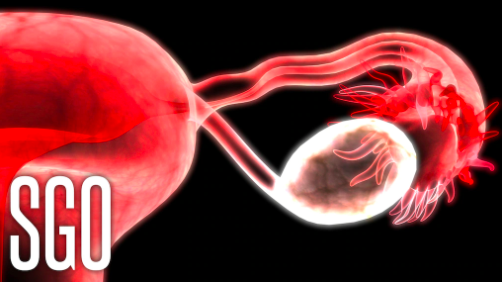Modest improvement in PFS with rucaparib but worse outcome for reversion mutation.
By Charles Bankhead
A PARP inhibitor slowed progression of recurrent, advanced BRCA-positive ovarian cancer as compared with standard chemotherapy, a randomized trial showed.
Treatment with rucaparib (Rubraca) led to a median progression-free survival (PFS) of 7.4 months versus 5.7 months with chemotherapy. The advantage persisted in per-protocol and intention-to-treat (ITT) analyses and investigator- and independently assessed PFS.
In an exploratory analysis of tumors with BRCA-reversion mutations, which restore homologous recombination repair of DNA and confer treatment resistance, chemotherapy resulted in a longer PFS in a small number of patients, Rebecca Kristeleit, MD, of Guy’s and St. Thomas’ Hospital in London, reported at the Society of Gynecologic Oncology virtual meeting.
“Patients with BRCA-mutated advanced, relapsed ovarian cancer who received rucaparib had a significant improvement in progression-free survival versus standard of care chemotherapy,” Kristeleit concluded. “The rucaparib safety profile was consistent with that reported in prior studies. This is the first prospective cohort from a randomized study showing that the presence of a BRCA-reversion mutation may predict for primary resistance to rucaparib.”
Follow-up for analysis of overall survival will continue until data are sufficiently mature, she added.
In late 2016, the FDA granted accelerated approval of rucaparib for previously treated BRCA-mutant advanced ovarian cancer. Final approval remained contingent on accumulation of additional data to support existing evidence of rucaparib’s safety and efficacy for the indication. Kristeleit reported findings from the confirmatory ARIEL4 trial designed to satisfy data requirements for final approval.
Eligible patients had relapsed, high-grade epithelial ovarian, fallopian tube, or primary peritoneal cancer associated with a deleterious BRCA mutation (germline or somatic), treated with two or more prior chemotherapy regimens, including at least one platinum-containing regimen. Prior treatment with a PARP inhibitor or single-agent paclitaxel was not allowed.
Investigators stratified patients by response to prior platinum-containing therapy: 1 to 6 months, resistant; 6 to 12 months, partially sensitive; and ≥12 months, fully sensitive. Patients were randomized 2:1 to single-agent rucaparib or standard-of-care chemotherapy. Patients received single-agent rucaparib, irrespective of platinum response status. Those allocated to chemotherapy received weekly paclitaxel (resistant and partially sensitive patients) or platinum-based chemotherapy (fully sensitive).
Treatment continued until disease progression, unacceptable toxicity, or death. Patients allocated to chemotherapy could cross over to rucaparib at disease progression. The primary endpoint was investigator-assessed PFS in the efficacy population (BRCA-reversion mutations excluded), followed by an ITT analysis if rucaparib proved superior in the efficacy population.
Data analysis included 349 randomized patients, 233 assigned to rucaparib and 116 to chemotherapy. The study population had a median age of 58 and median time from diagnosis of about 3.5 years. About 15% of BRCA mutations were somatic, and the rest were germline. A majority of patients had received two prior regimens, but 38% had received three or more prior regimens.
The median platinum-free interval for the most recent platinum regimen was 5.7 months. About half the patients had platinum-resistant disease, about a fourth had partially sensitive disease, and the rest had platinum-sensitive cancers.
The primary analysis showed that rucaparib was associated with a 36% reduction in the hazard for disease progression or death (95% CI 0.49-0.84, P=0.001). The ITT analysis yielded a median PFS of 7.4 months with rucaparib and 5.7 months with chemotherapy (HR 0.67, 95% CI 0.52-0.86, P=0.002).
Kristeleit said 23 patients had BRCA-reversion mutations, 13 in the rucaparib arm. Chemotherapy led to numerically better PFS in that analysis, 5.5 versus 2.9 months (HR 2.77, 95% CI 0.99-7.76).
Rucaparib offered a numerically higher response rate (40.3% vs 32.3%, P=0.13) and a significantly longer duration of response (9.4 vs 7.2 months, HR 0.59, 95% CI 0.36-0.98). Quality-of-life outcomes were similar between treatment groups.
Analysis of treatment-emergent adverse events (TEAEs) showed that rucaparib was associated with more anemia, nausea, elevated liver enzymes, vomiting, abdominal pain, and thrombocytopenia. The most common grade ≥3 TEAEs were anemia (22.4% with rucaparib and 5.3% with chemotherapy) and neutropenia (15.0% with chemotherapy and 10.3% with rucaparib).
Data from trials of olaparib (Lynparza) showed that response to single-agent PARP inhibition decreases with increasing platinum resistance and number of prior lines of therapy, said invited discussant Ursula A. Matulonis, MD, of Dana-Farber Cancer Institute in Boston. Prior investigation of rucaparib revealed that patients with BRCA-reversion mutations do not benefit from the PARP inhibitor.
“Data from ARIEL4 fit the paradigm that single-agent activity of PARP inhibitors in BRCA-mutated recurrent ovarian cancer may be comparable to chemotherapy and may at times be superior, depending on the study population, trial design, and treatment for control patients,” she said. “The BRCA-reversion mutation data from ARIEL4 is intriguing. Strategies to overcome and better understand this type of resistance mechanism are needed.”
This article was published by Medpage Today.


